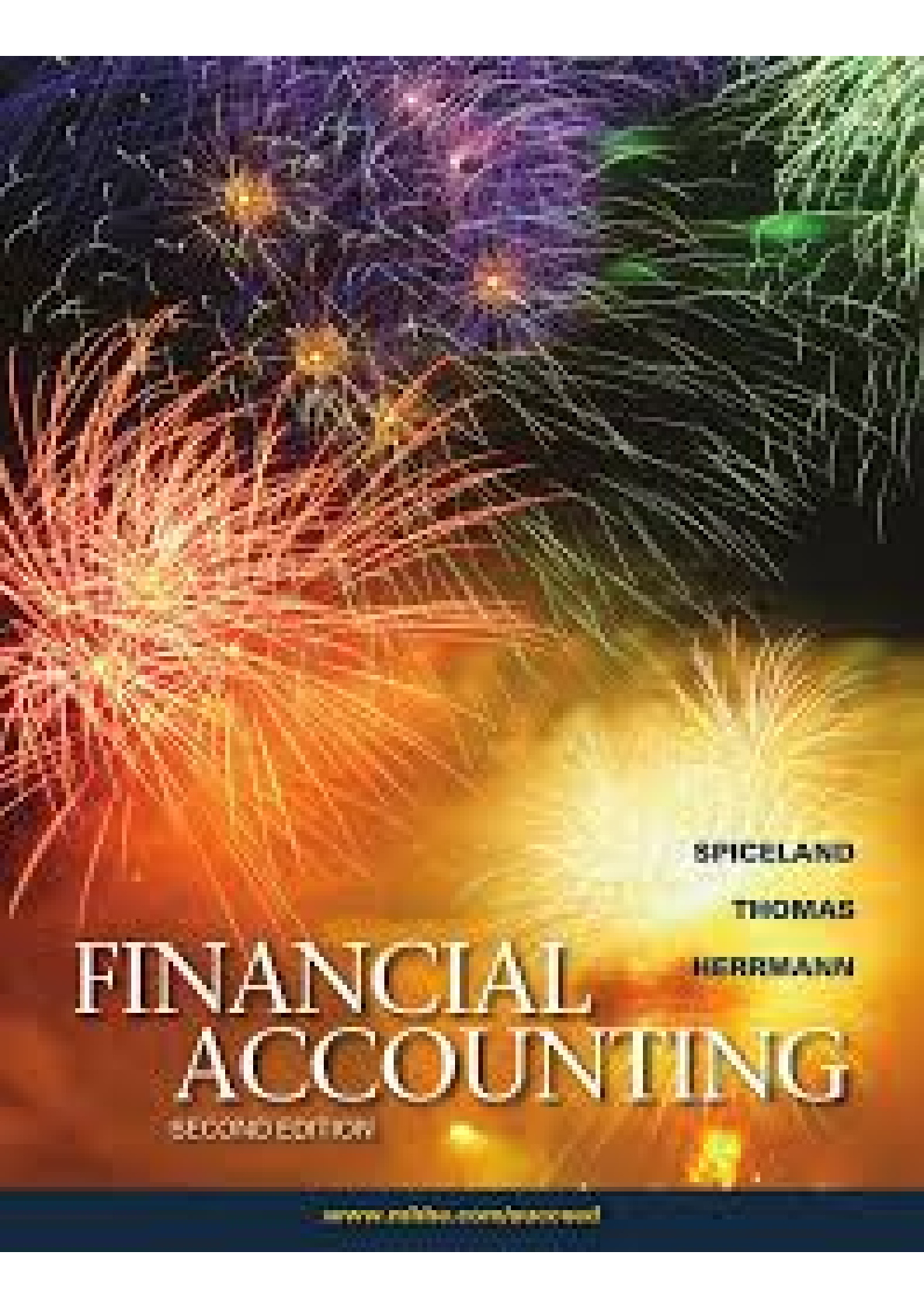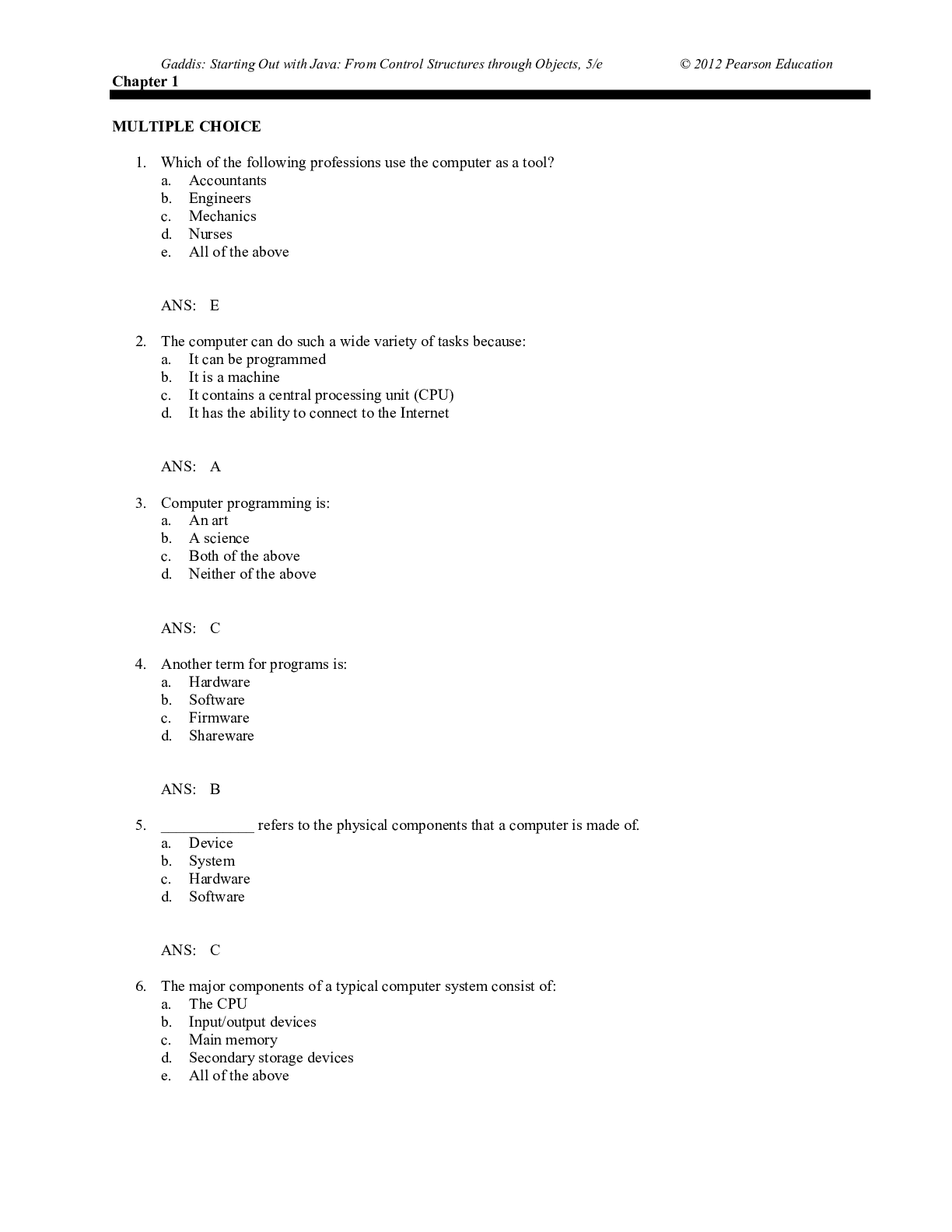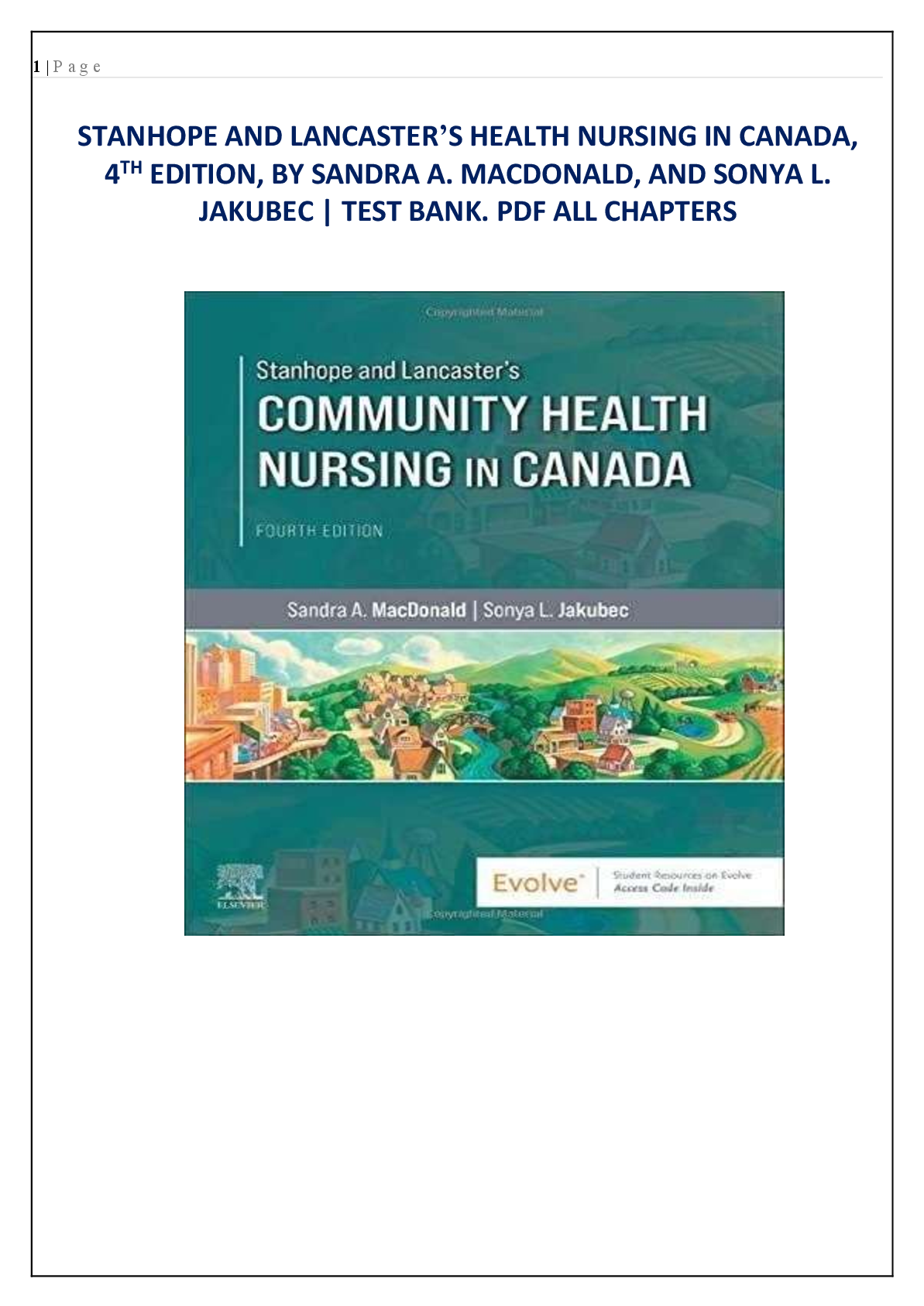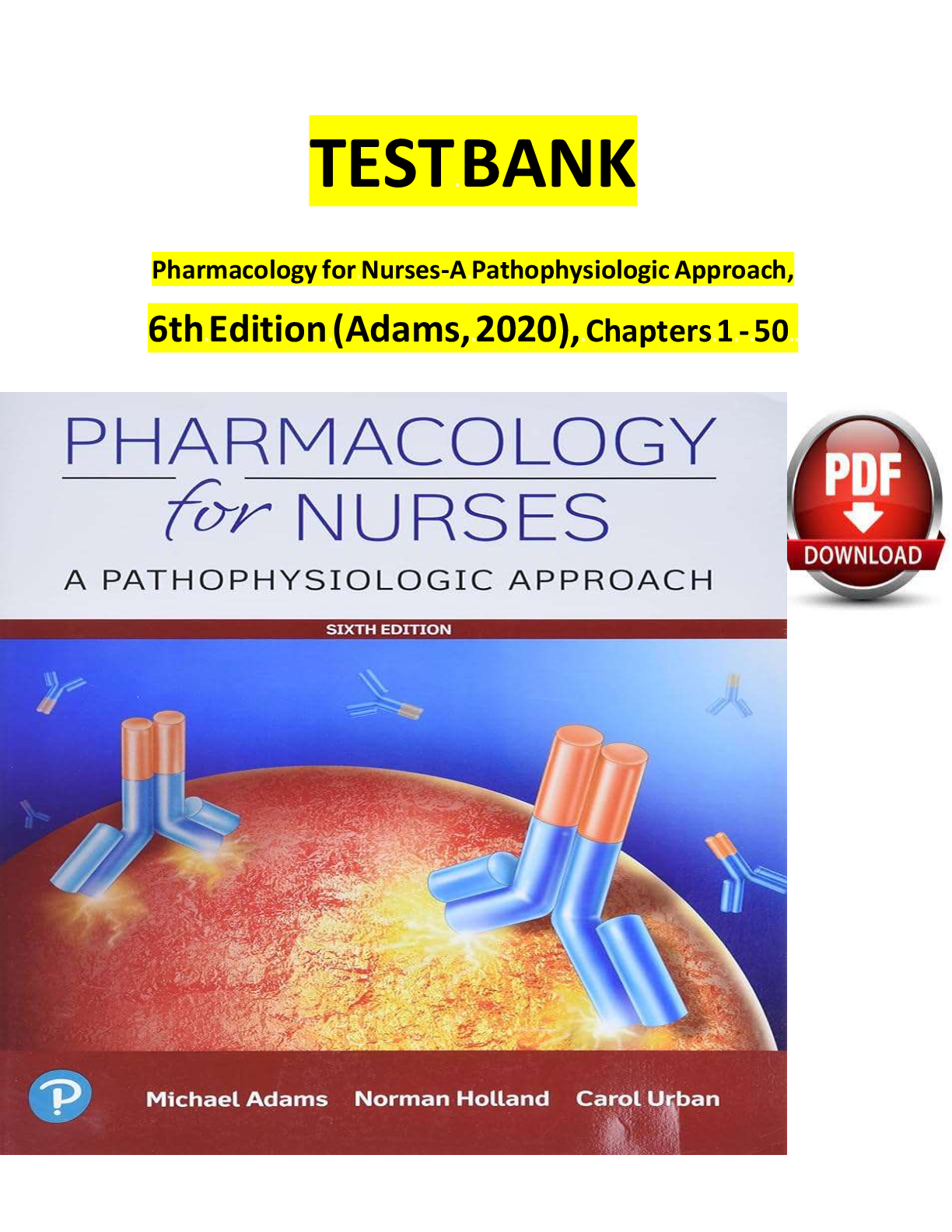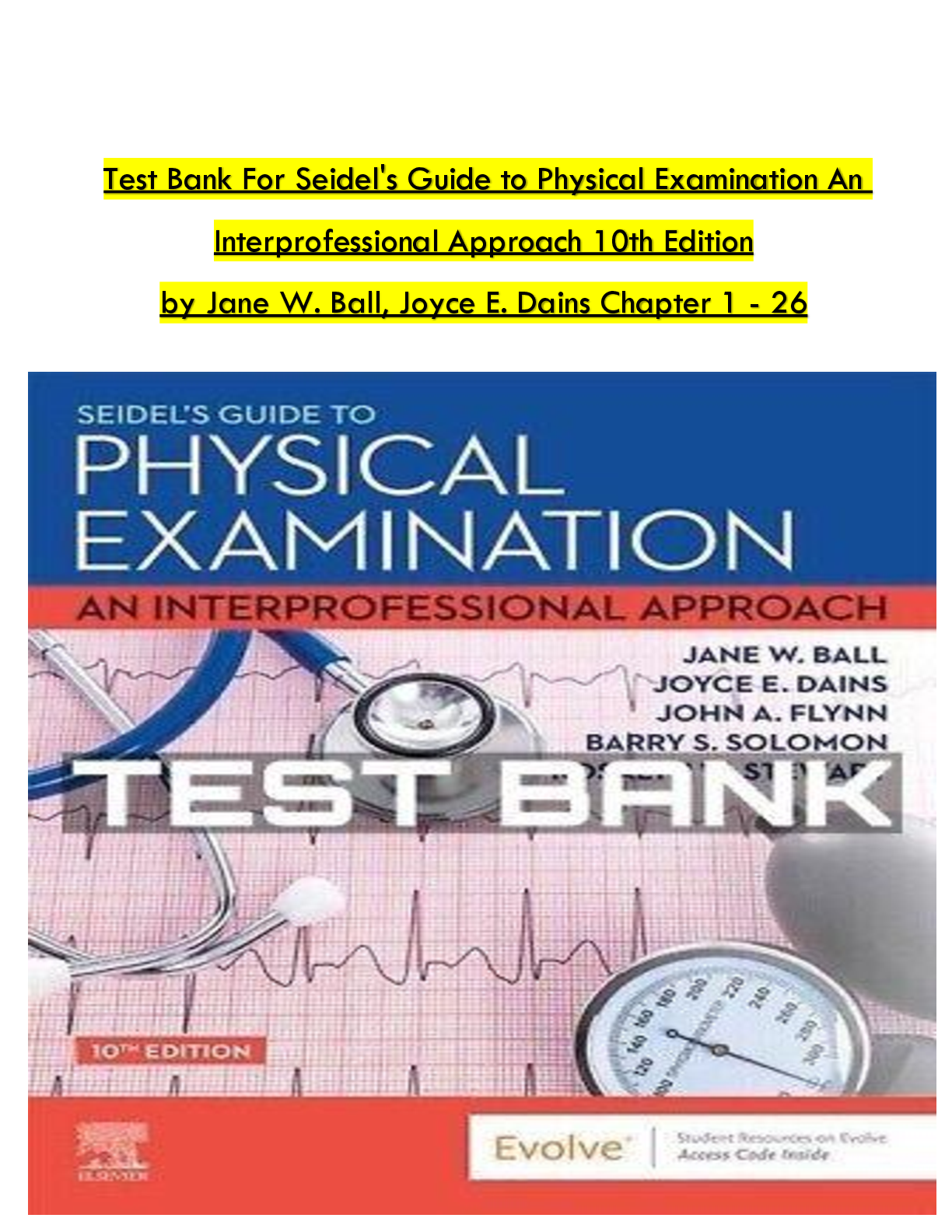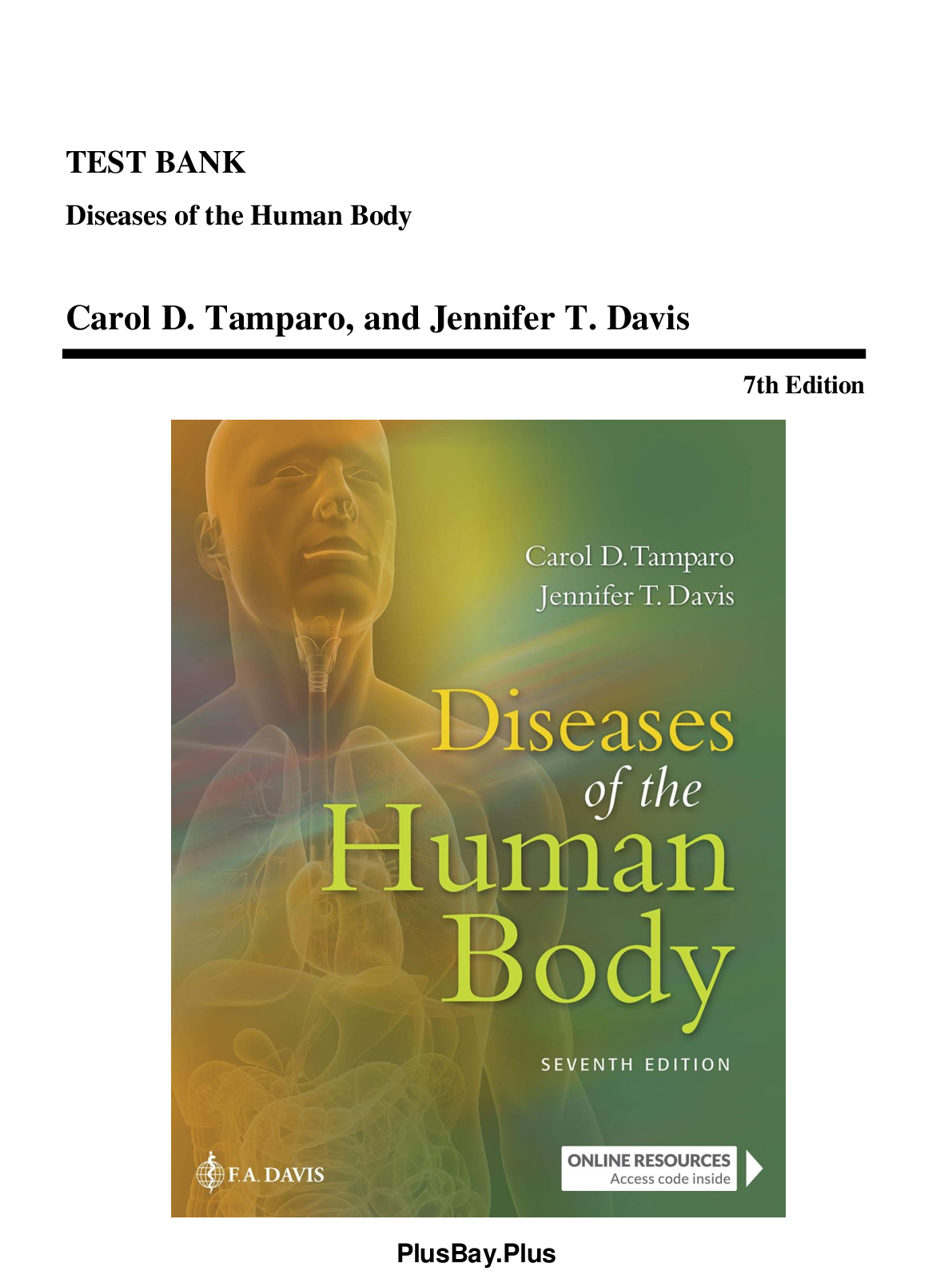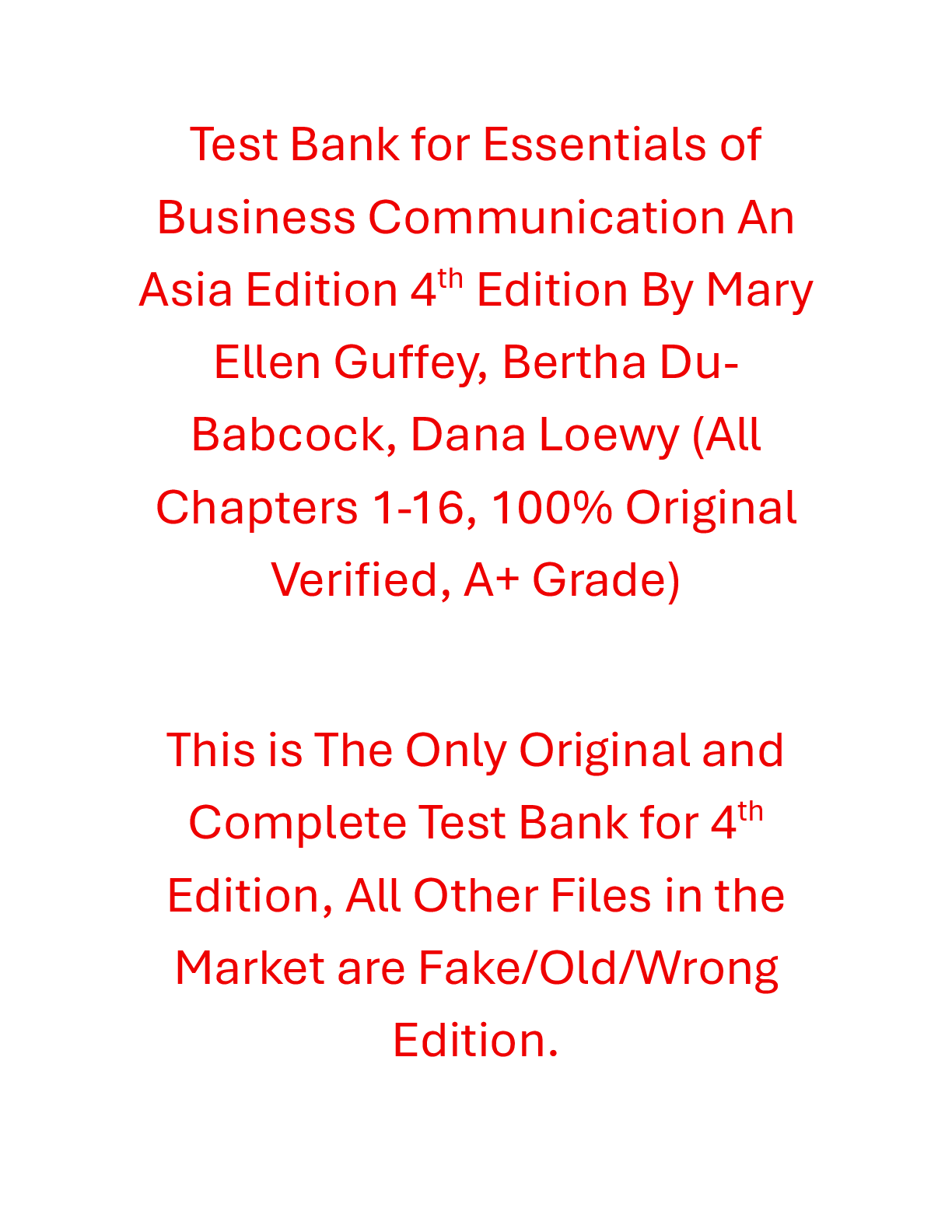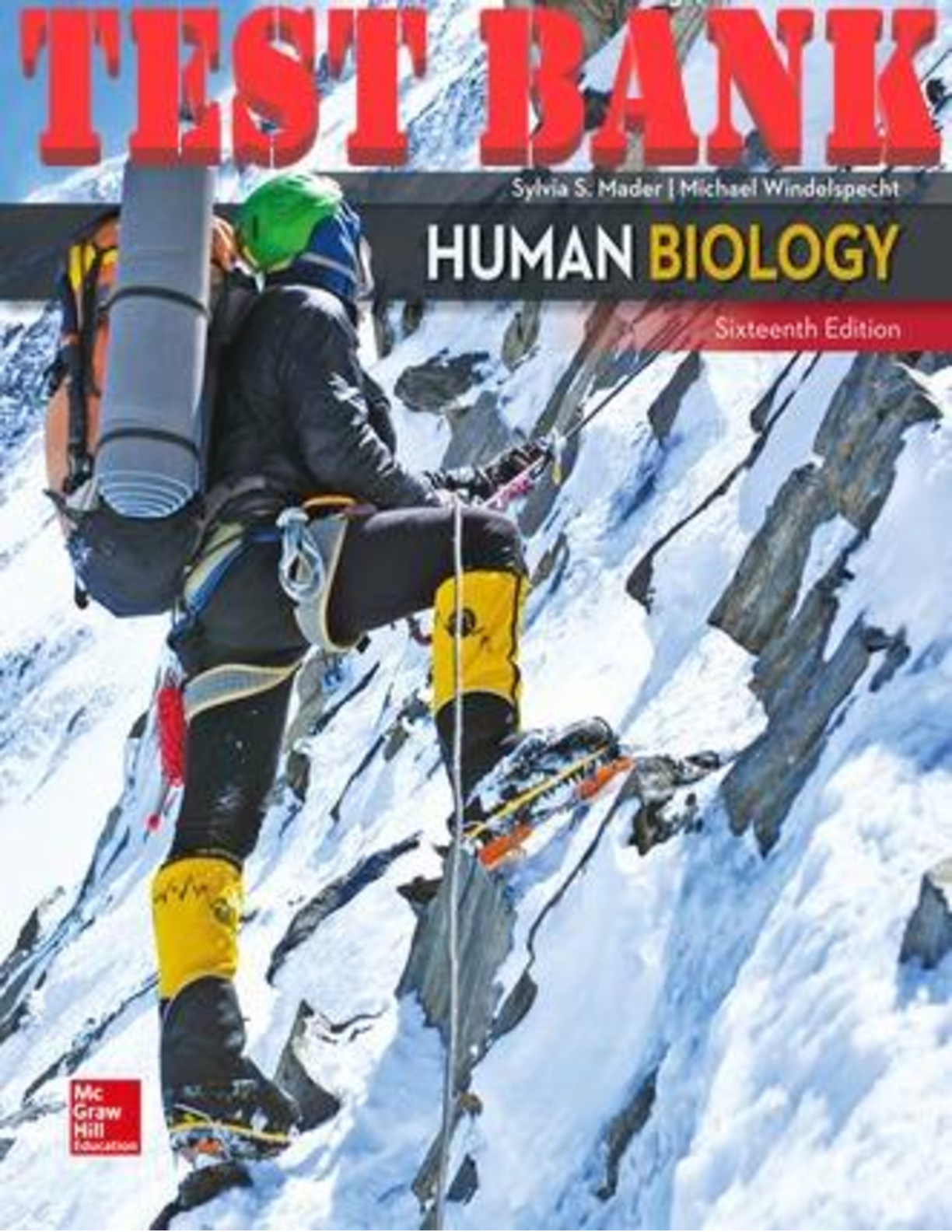Database Management > TEST BANKS > Exam (elaborations) TEST BANK FOR Database Systems Design, Implementation, & Management 13th Edition (All)
Exam (elaborations) TEST BANK FOR Database Systems Design, Implementation, & Management 13th Edition By Coronel and Morris
Document Content and Description Below
Exam (elaborations) TEST BANK FOR Database Systems Design, Implementation, & Management 13th Edition By Coronel and Morris Chapter 01: Database Systems Copyright Cengage Learning. Powered by Cognero. ... Page 1 True / False 1. Data and information are essentially the same thing. a. True b. False ANSWER: False DIFFICULTY: Easy REFERENCES: 1-2 Data versus Information LEARNING OBJECTIVES: 01.01 - Define the difference between data and information 2. Data processing can be as simple as organizing data to reveal patterns. a. True b. False ANSWER: True DIFFICULTY: Easy REFERENCES: 1-2 Data versus Information LEARNING OBJECTIVES: 01.01 - Define the difference between data and information 3. Data is the result of processing raw facts to reveal its meaning. a. True b. False ANSWER: False DIFFICULTY: Easy REFERENCES: 1-2 Data versus Information LEARNING OBJECTIVES: 01.01 - Define the difference between data and information 4. When data are entered into a form and saved, they are placed in the underlying database as knowledge. a. True b. False ANSWER: False DIFFICULTY: Moderate REFERENCES: 1-2 Data versus Information LEARNING OBJECTIVES: 01.01 - Define the difference between data and information 5. Data constitute the building blocks of information. a. True b. False ANSWER: True DIFFICULTY: Easy REFERENCES: 1-2 Data versus Information LEARNING OBJECTIVES: 01.01 - Define the difference between data and information 6. Metadata describe the data characteristics and the set of relationships that links the data found within the database. a. True b. False Chapter 01: Database Systems Copyright Cengage Learning. Powered by Cognero. Page 2 ANSWER: True DIFFICULTY: Easy REFERENCES: 1-3 Introducing the Database LEARNING OBJECTIVES: 01.02 - Describe what a database is, the various types of databases, and why they are valuable assets for decision making 7. The only way to access the data in a database is through the DBMS. a. True b. False ANSWER: True DIFFICULTY: Moderate REFERENCES: 1-3a Role and Advantages of the DBMS LEARNING OBJECTIVES: 01.02 - Describe what a database is, the various types of databases, and why they are valuable assets for decision making 8. Database programming languages receive all application requests and translate them into the complex operations required to fulfill those requests. a. True b. False ANSWER: False DIFFICULTY: Moderate REFERENCES: 1-3a Role and Advantages of the DBMS LEARNING OBJECTIVES: 01.02 - Describe what a database is, the various types of databases, and why they are valuable assets for decision making 9. The DBMS reveals much of the database’s internal complexity to the application programs and users. a. True b. False ANSWER: False DIFFICULTY: Moderate REFERENCES: 1-3a Role and Advantages of the DBMS LEARNING OBJECTIVES: 01.02 - Describe what a database is, the various types of databases, and why they are valuable assets for decision making 10. One disadvantage of the DBMS is that it increases the risk of data security breaches. a. True b. False ANSWER: False DIFFICULTY: Easy REFERENCES: 1-3a Role and Advantages of the DBMS LEARNING OBJECTIVES: 01.02 - Describe what a database is, the various types of databases, and why they are valuable assets for decision making 11. An operational database is sometimes referred to as an enterprise database. a. True b. False Chapter 01: Database Systems Copyright Cengage Learning. Powered by Cognero. Page 3 ANSWER: False DIFFICULTY: Easy REFERENCES: 1-3b Types of Databases LEARNING OBJECTIVES: 01.02 - Describe what a database is, the various types of databases, and why they are valuable assets for decision making 12. A data warehouse can store data derived from many sources. a. True b. False ANSWER: True DIFFICULTY: Easy REFERENCES: 1-3b Types of Databases LEARNING OBJECTIVES: 01.02 - Describe what a database is, the various types of databases, and why they are valuable assets for decision making 13. Structure is based on the type of processing to be performed on the data. a. True b. False ANSWER: True DIFFICULTY: Moderate REFERENCES: 1-3b Types of Databases LEARNING OBJECTIVES: 01.02 - Describe what a database is, the various types of databases, and why they are valuable assets for decision making 14. Corporations use only structured data. a. True b. False ANSWER: False DIFFICULTY: Moderate REFERENCES: 1-3b Types of Databases LEARNING OBJECTIVES: 01.02 - Describe what a database is, the various types of databases, and why they are valuable assets for decision making 15. Field refers to a collection of related records. a. True b. False ANSWER: False DIFFICULTY: Easy REFERENCES: 1-5b Computerized File Systems LEARNING OBJECTIVES: 01.04 - See how modern databases evolved from file systems 16. Structural dependence exists when it is possible to make changes in the file structure without affecting the application program’s ability to access the data. a. True b. False ANSWER: False Chapter 01: Database Systems Copyright Cengage Learning. Powered by Cognero. Page 4 DIFFICULTY: Moderate REFERENCES: 1-6a Structural and Data Dependence LEARNING OBJECTIVES: 01.05 - Understand flaws in file system data management 17. One disadvantage of a database system over previous data management approaches is increased costs. a. True b. False ANSWER: True DIFFICULTY: Easy REFERENCES: 1-7c Managing the Database System: A Shift in Focus LEARNING OBJECTIVES: 01.05 - Understand flaws in file system data management 18. Data anomaly is defined as the condition in which all of the data in the database are consistent with the real-world events and conditions. a. True b. False ANSWER: False DIFFICULTY: Easy REFERENCES: 1-6b Data Redundancy LEARNING OBJECTIVES: 01.05 - Understand flaws in file system data management 19. An advantage of database systems is that you needn't perform frequent updates and apply latest patches. a. True b. False ANSWER: False DIFFICULTY: Moderate REFERENCES: 1-7c Managing the Database System: A Shift in Focus LEARNING OBJECTIVES: 01.06 - Outline the main components of the database system 20. One advantage of a database system over previous data management approaches is that the database system is considerably less complex. a. True b. False ANSWER: False DIFFICULTY: Moderate REFERENCES: 1-7c Managing the Database System: A Shift in Focus LEARNING OBJECTIVES: 01.06 - Outline the main components of the database system Multiple Choice 21. _____ is the result of revealing the meaning of raw facts. a. End-user data b. An encoded sample c. An encrypted bit d. Information ANSWER: d DIFFICULTY: Easy Chapter 01: Database Systems Copyright Cengage Learning. Powered by Cognero. Page 5 REFERENCES: 1-2 Data versus Information LEARNING OBJECTIVES: 01.01 - Define the difference between data and information 22. _____ is the body of information and facts about a specific subject. a. Validation b. A format c. Knowledge d. A database ANSWER: c DIFFICULTY: Easy REFERENCES: 1-2 Data versus Information LEARNING OBJECTIVES: 01.01 - Define the difference between data and information 23. Accurate, relevant, and timely information is the key to ____. a. data management b. good decision making c. knowledge d. understanding ANSWER: b DIFFICULTY: Moderate REFERENCES: 1-2 Data versus Information LEARNING OBJECTIVES: 01.01 - Define the difference between data and information 24. End-user data is _____. a. knowledge about the end users b. raw facts of interest to the end user c. information about a specific subject d. accurate, relevant and timely information ANSWER: b DIFFICULTY: Easy REFERENCES: 1-3 Introducing the Database LEARNING OBJECTIVES: 01.02 - Describe what a database is, the various types of databases, and why they are valuable assets for decision making 25. _____ provide a description of the data characteristics and the set of relationships that link the data found within the database. a. Queries b. End-user data c. Metadata d. Schemas ANSWER: c DIFFICULTY: Easy REFERENCES: 1-3 Introducing the Database LEARNING OBJECTIVES: 01.02 - Describe what a database is, the various types of databases, and why they are valuable assets for decision making 26. _____ serve as the intermediary between the user and the database. a. DBMSs b. Metadata c. End-user data d. Programming languages ANSWER: a DIFFICULTY: Easy REFERENCES: 1-3a Role and Advantages of the DBMS LEARNING OBJECTIVES: 01.02 - Describe what a database is, the various types of databases, and why they are valuable assets for decision making Chapter 01: Database Systems Copyright Cengage Learning. Powered by Cognero. Page 6 27. The database structure in a DBMS is stored as a _____. a. single file b. collection of files c. set of key/value pairs d. collection of queries ANSWER: b DIFFICULTY: Easy REFERENCES: 1-3a Role and Advantages of the DBMS LEARNING OBJECTIVES: 01.02 - Describe what a database is, the various types of databases, and why they are valuable assets for decision making 28. A(n) _____ might be written by a programmer or it might be created through a DBMS utility program. a. query b. operating system c. database management system d. application ANSWER: d DIFFICULTY: Easy REFERENCES: 1-3a Role and Advantages of the DBMS LEARNING OBJECTIVES: 01.02 - Describe what a database is, the various types of databases, and why they are valuable assets for decision making 29. _____ exists when different versions of the same data appear in different places. a. Data inconsistency b. Poor data security c. Structural dependence d. Conceptual dependence ANSWER: a DIFFICULTY: Easy REFERENCES: 1-3a Role and Advantages of the DBMS LEARNING OBJECTIVES: 01.02 - Describe what a database is, the various types of databases, and why they are valuable assets for decision making 30. The response of the DBMS to a query is the ___________ a. ad hoc query b. ad hoc response c. query result set d. integrated view of the data ANSWER: c DIFFICULTY: Easy REFERENCES: 1-3a Role and Advantages of the DBMS LEARNING OBJECTIVES: 01.02 - Describe what a database is, the various types of databases, and why they are valuable assets for decision making 31. A(n) _____ database is used by an organization and supports many users across many departments. a. desktop b. workgroup c. enterprise d. transactional ANSWER: c DIFFICULTY: Easy REFERENCES: 1-3b Types of Databases LEARNING OBJECTIVES: 01.02 - Describe what a database is, the various types of databases, and why they are valuable assets for decision making Chapter 01: Database Systems Copyright Cengage Learning. Powered by Cognero. Page 7 32. A(n) _____ database supports a relatively small number of users (usually fewer than 50) or a specific department within an organization. a. desktop b. workgroup c. enterprise d. transactional ANSWER: b DIFFICULTY: Easy REFERENCES: 1-3b Types of Databases LEARNING OBJECTIVES: 01.02 - Describe what a database is, the various types of databases, and why they are valuable assets for decision making 33. A workgroup database is a(n) _____ database. a. single-user b. multiuser c. desktop d. distributed ANSWER: b DIFFICULTY: Easy REFERENCES: 1-3b Types of Databases LEARNING OBJECTIVES: 01.02 - Describe what a database is, the various types of databases, and why they are valuable assets for decision making 34. A desktop database is a _____ database. a. single-user b. multiuser c. workgroup d. distributed ANSWER: a DIFFICULTY: Easy REFERENCES: 1-3b Types of Databases LEARNING OBJECTIVES: 01.02 - Describe what a database is, the various types of databases, and why they are valuable assets for decision making 35. A data warehouse contains historical data obtained from the _____. a. operational databases b. desktop database c. enterprise databases d. workgroup databases ANSWER: a DIFFICULTY: Easy REFERENCES: 1-3b Types of Databases LEARNING OBJECTIVES: 01.02 - Describe what a database is, the various types of databases, and why they are valuable assets for decision making 36. _____ data exist in the format in which they were collected. a. Structured b. Semistructured c. Unstructured d. Historical ANSWER: c DIFFICULTY: Easy REFERENCES: 1-3b Types of Databases LEARNING OBJECTIVES: 01.02 - Describe what a database is, the various types of databases, and why they are valuable assets for decision making Chapter 01: Database Systems Copyright Cengage Learning. Powered by Cognero. Page 8 37. _____ data exist in a format that does not lend itself to processing that yields information. a. Structured b. Semistructured c. Unstructured d. Historical ANSWER: c DIFFICULTY: Easy REFERENCES: 1-3b Types of Databases LEARNING OBJECTIVES: 01.02 - Describe what a database is, the various types of databases, and why they are valuable assets for decision making 38. _____ are the result of formatting disorganized data in order to facilitate storage, use and generation of information. a. Structured data b. Raw data c. Unstructured data d. Obsolete data ANSWER: a DIFFICULTY: Easy REFERENCES: 1-3b Types of Databases LEARNING OBJECTIVES: 01.02 - Describe what a database is, the various types of databases, and why they are valuable assets for decision making 39. Most data that can be encountered are best classified as _____. a. structured b. semistructured c. unstructured d. historical ANSWER: b DIFFICULTY: Easy REFERENCES: 1-3b Types of Databases LEARNING OBJECTIVES: 01.02 - Describe what a database is, the various types of databases, and why they are valuable assets for decision making 40. An XML database supports the storage and management of _____ XML data. a. structured b. multistructured c. fullystructured d. semistructured ANSWER: d DIFFICULTY: Easy REFERENCES: 1-3b Types of Databases LEARNING OBJECTIVES: 01.02 - Describe what a database is, the various types of databases, and why they are valuable assets for decision making 41. The organization of data within folders in a manual file system is determined by _______. a. its date of creation b. its expected use c. the title of the documents in the folder d. the data processing specialist ANSWER: b DIFFICULTY: Moderate REFERENCES: 1-5a Manual File Systems LEARNING OBJECTIVES: 01.04 - See how modern databases evolved from file systems 42. A _____ is a logically connected set of one or more fields that describes a person, place, or thing. a. database b. column Chapter 01: Database Systems Copyright Cengage Learning. Powered by Cognero. Page 9 c. record d. file ANSWER: c DIFFICULTY: Easy REFERENCES: 1-5b Computerized File Systems LEARNING OBJECTIVES: 01.04 - See how modern databases evolved from file systems 43. A _____ is a collection of related records. a. schema b. field c. column d. file ANSWER: d DIFFICULTY: Easy REFERENCES: 1-5b Computerized File Systems LEARNING OBJECTIVES: 01.04 - See how modern databases evolved from file systems 44. A _____ is a character or group of characters that has a specific meaning. a. database b. field c. record d. file ANSWER: b DIFFICULTY: Easy REFERENCES: 1-5b Computerized File Systems LEARNING OBJECTIVES: 01.04 - See how modern databases evolved from file systems 45. Which of the following is true of spreadsheet applications? a. They provide enhanced security and robust data sharing features. b. They do not allow manipulation of data once entered. c. They are a better alternative to databases. d. They enhance the user's ability to understand the data. ANSWER: d DIFFICULTY: Moderate REFERENCES: 1-5c File System Redux: Modern End-User Productivity LEARNING OBJECTIVES: 01.04 - See how modern databases evolved from file systems 46. Which of the following refers to the situation where different versions of the same data are stored at different places because they weren’t updated consistently? a. Data query b. Data integrity c. Data dictionary d. Data redundancy ANSWER: d DIFFICULTY: Easy REFERENCES: 1-6b Data Redundancy LEARNING OBJECTIVES: 01.05 - Understand flaws in file system data management 47. Data is said to be verifiable if: a. the data always yields consistent results. b. the data cannot be changed or manipulated. c. the data is obtained from trusted sources. d. the data is stored in different places within the database. ANSWER: a Chapter 01: Database Systems Copyright Cengage Learning. Powered by Cognero. Page 10 DIFFICULTY: Easy REFERENCES: 1-6b Data Redundancy LEARNING OBJECTIVES: 01.05 - Understand flaws in file system data management 48. _____ is defined as the condition in which all of the data in the database are consistent with the real-world events and conditions. a. Data integrity b. Data anomaly c. Data ubiquity d. Data quality ANSWER: a DIFFICULTY: Easy REFERENCES: 1-6b Data Redundancy LEARNING OBJECTIVES: 01.05 - Understand flaws in file system data management 49. The term _____ refers to an organization of components that define and regulate the collection, storage, management and use of data within a database environment. a. structured data b. transaction c. management system d. database system ANSWER: d DIFFICULTY: Moderate REFERENCES: 1-7a The Database System Environment LEARNING OBJECTIVES: 01.06 - Outline the main components of the database system 50. _____ relates to the activities that make the database execute transactions more efficiently in terms of storage and [Show More]
Last updated: 1 year ago
Preview 1 out of 137 pages
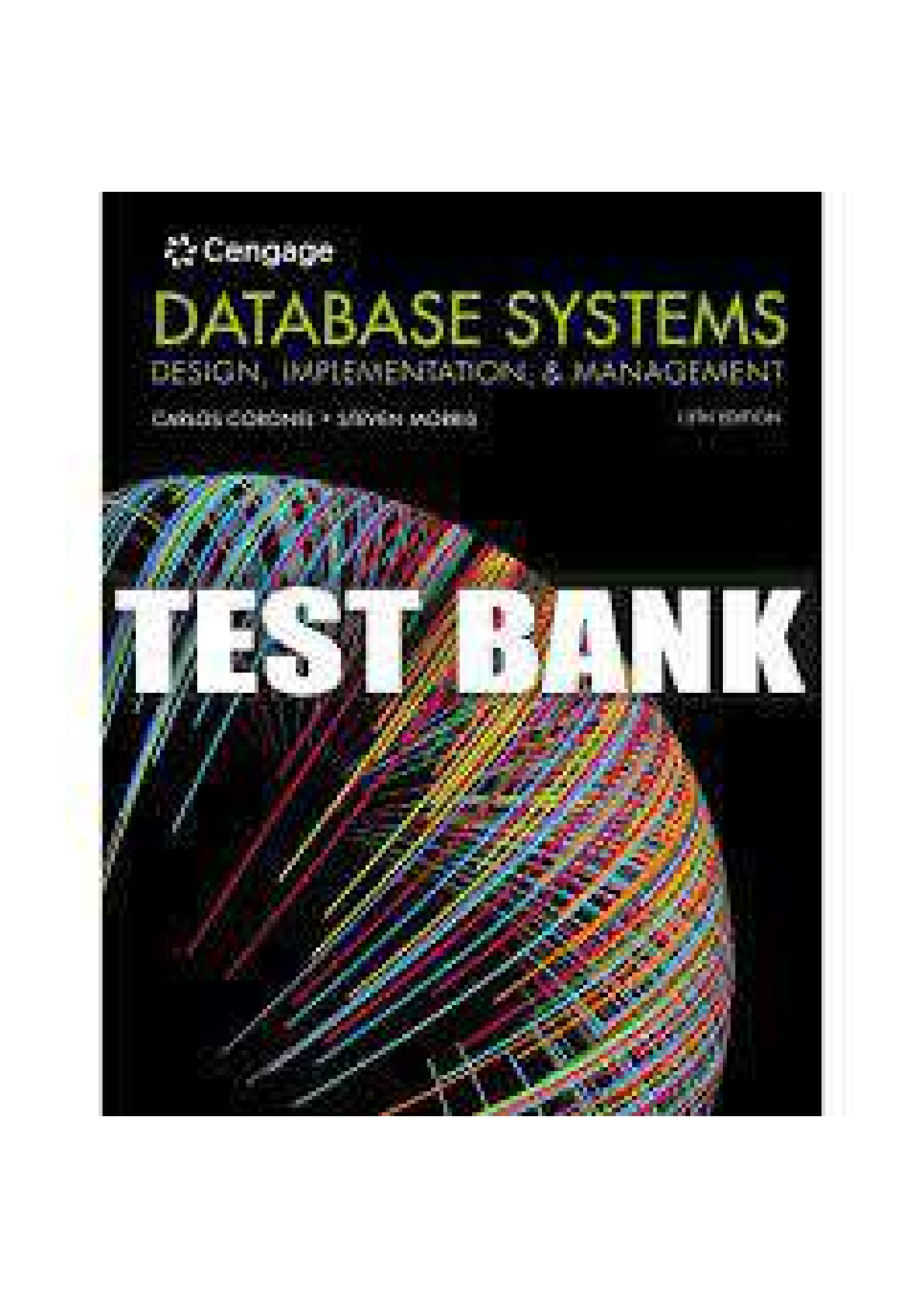
Buy this document to get the full access instantly
Instant Download Access after purchase
Buy NowInstant download
We Accept:

Reviews( 0 )
$15.00
Can't find what you want? Try our AI powered Search
Document information
Connected school, study & course
About the document
Uploaded On
Feb 18, 2024
Number of pages
137
Written in
All
Additional information
This document has been written for:
Uploaded
Feb 18, 2024
Downloads
0
Views
108

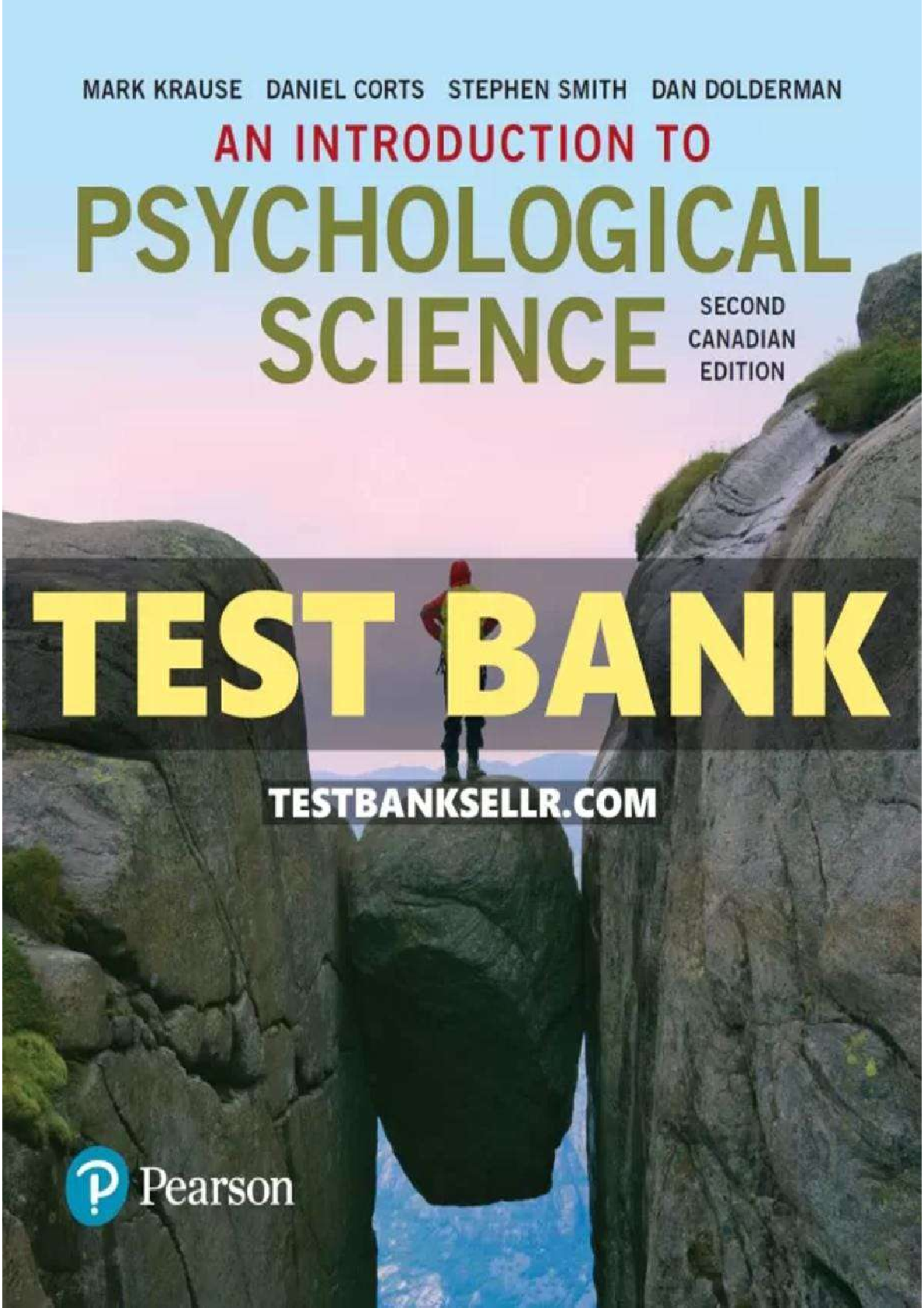
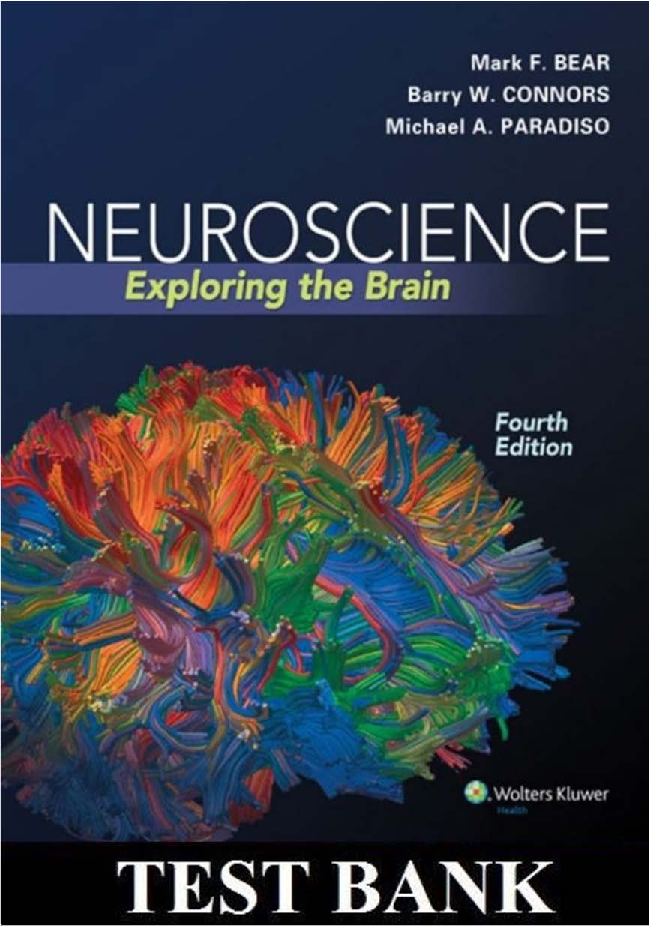

 (1).png)
